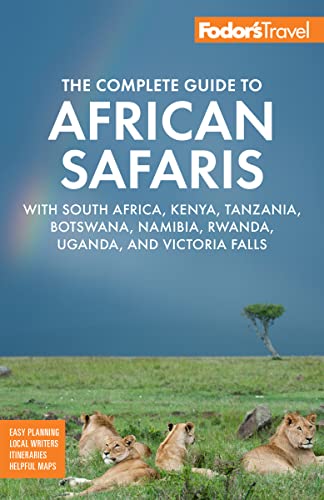This photogenic, startlingly beautiful park takes its name—meaning Great White Place—from a vast flat depression that was a deep inland lake 12 million years ago. The white clay pan, also known as the Place of Mirages, covers nearly 25% of the park's surface.
Although it's usually dry, in a good rainy season it floods and becomes home to many water birds, including tens of thousands of flamingos that feed on the blue-green algae of the pan. Although the park is never crowded with visitors like some of the East African game parks, the scenery here is no less spectacular: huge herds that dot the plains and gather at the many and varied water holes. The dust devils, mirages, and terrain that changes from densely wooded thickets to wide-open spaces and from white salt-encrusted pans to blond grasslands, will keep you captivated for hours.
The game's all here—the Big Five—large and small, fierce and gentle, beautiful and ugly. But one of Etosha's main attractions isn’t the numbers of animals that you can see (more than 114 species), but how easily you can see them. The game depend on the natural springs that are found all along the edges of the pan, and as the animals have grown used to drinking at these water holes for decades, they’re not put off by vehicles or game-seeking visitors. On the road from the Von Lindequist Gate, the eastern entrance to Etosha, look out for the smallest of all African antelope, the Damara dik-dik. If you see a diminutive "Bambi" sheltering under a roadside bush, that's it. The Namutoni area and the two Okevi water holes—Klein Namutoni and Kalkheuwel—probably provide the best chances to see leopards. Don't miss the blackface impala, native to Etosha, and one of the rarest of antelope and an endangered species. Bigger and more boldly marked than its smaller cousin, the impala, you'll find it drinking in small herds at water holes all over the park.
The real secret of game-watching in the park is to settle in at one of the many water holes, most of which are on the southern edges of the pan, and wait. And wait. Each water hole has its own unique personality and characteristics. Even if the hole is small and deep, like Ombika, on the western side, you'll be amazed at what may arrive. Old Africa hands maintain that you should be up at dawn for the best sightings, but you can see marvelous game at all times of day. The plains, where you'll likely spot cheetahs, are also home to huge herds of zebras and wildebeests, and you may see the silhouettes of giraffes as they cross the skyline in stately procession. Watch out for herds of springbok "pronking"—an activity wherein these lovely little antelope bounce and bound high into the air as they run. Zoologists argue over the reason for this behavior. Some say it’s to avoid predators, others that it’s to demonstrate agility, strength, and stamina; most visitors like to believe that pronking is just for fun. Salvadora, a constant spring on the fringe of Etosha Pan near Halali, is a favorite watering point for some of these big herds. Watch out also for the stately eland, Africa's largest antelope. As big as a cow, although more streamlined and elegant, this antelope can jump higher than any other African antelope—amazing when you consider its huge size. And where there's water, there's always game. Predators, especially lions, lurk around most of the water holes looking for a meal. Plan to spend at least half a night sitting on a bench at the floodlighted Okaukuejo water hole. You really are within spitting distance of the game. Bring a book, write in your journal, or just sit while you wait. You may be amazed at the variety of animals that come down to drink: black and white rhinos, lions, jackals, and even the occasional leopard. This is a particularly good place to look out for black rhinos, which trot purposefully up to drink and in so doing scare all but the bravest of other game away. Groot Okevi water hole, close to Namutoni, is also good for black rhinos.
Don't overlook the more than 340 dazzling varieties of bird—the crimson-breasted shrike is particularly gorgeous—and watch for ostriches running over the plains or raptors hunting silently overhead. There are many endemics, including the black-faced and bare-cheeked babblers, violet wood-hoopoe (look for them in Halali camp), Rüppell's parrot, Bradfield's swift, and the white-tailed shrike.
Be aware of the trees, shrubs, and plants as well. Just east of Okaukuejo is the legendary Haunted or Ghost Forest, where moringa trees have morphed into twisted, strange, and grotesque shapes: you may feel as if you're in Snow White's forest or deep in Middle Earth.






